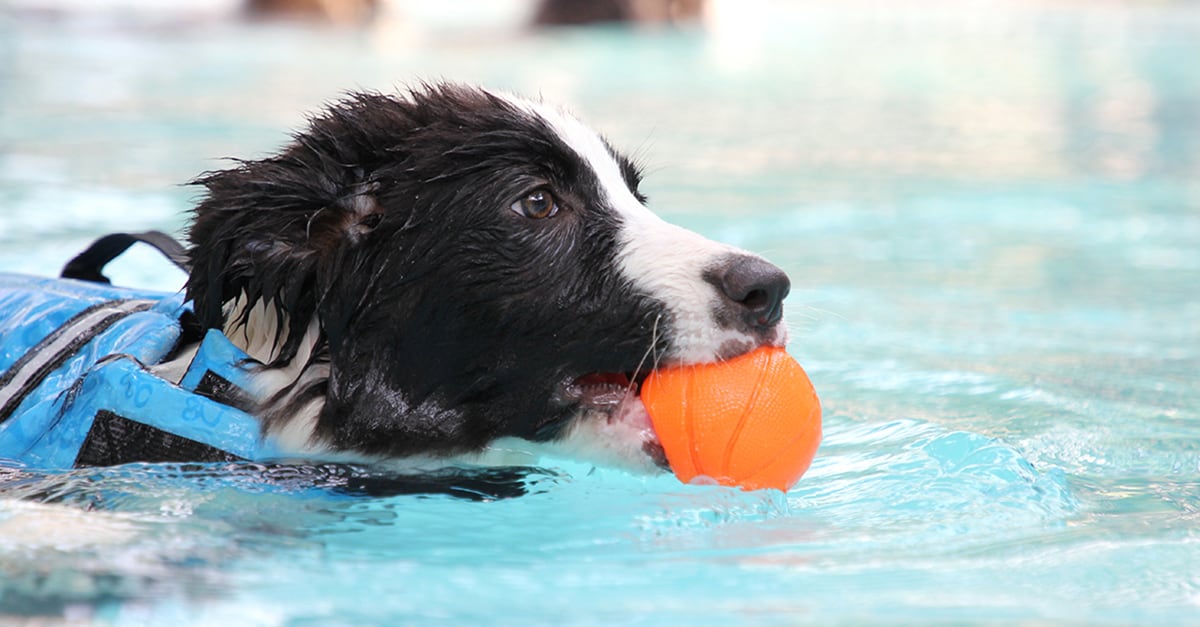Welcome to another installment of “Debarking Pet Myths,” our monthly series that addresses common myths, misconceptions and old wives’ tales about dogs, cats and their nutrition.
A successful rescue of a dog that is drowning (yes, dogs can drown) will bring a flood of relief to their owner. But if a dog has been saved from a near-drowning, are they out of the woods? Maybe not, due to a condition called “dry drowning.”
What Is Dry Drowning?
Dry drowning, also called secondary drowning, is a potentially fatal condition that occurs when a dog aspirates (breathes in) water. Breathing becomes difficult for the dog if water enters their lungs or if it irritates their larynx (vocal cords) and causes the larynx to spasm. A scary aspect of dry drowning is that it can happen hours and even days after the near-drowning occurred. That is why, if your dog had a near-drowning incident, it is important to immediately take them to a veterinarian for a full examination, even if they seem fine.
Dogs can get salt poisoning from ingesting too much seawater, which is another reason to have your dog examined immediately by a veterinarian, even if they seem OK. Any residual water in their lungs could also lead to pneumonia, which would require antibiotic treatment.
What Are the Signs of Dry Drowning?
Signs of dry drowning in dogs are related to a lack of oxygen. They include:
- Lethargy (not wanting to play, move or eat)
- Coughing
- Difficulty breathing
- Distress
How Is Dry Drowning Treated?
Emergency veterinary treatment is required. If your dog stops breathing before you can make it to the veterinary clinic, perform artificial respiration, or CPR if you can’t detect a heartbeat. To be prepared for this or any other emergency situation, the American Red Cross offers an online cat and dog first aid training course that covers breathing and cardiac emergencies. Once at the veterinary clinic, your veterinarian will perform a full examination and decide the best course of treatment.
How Can Dry Drowning Be Prevented?
Some suggestions to help prevent drowning, near-drowning and dry drowning include:
- Supervise your dog while they are swimming or playing in water
- Make sure your dog has a way to leave the water and that they know how to use it
- Consider fencing off pools or ponds that your dog can access
- Use a correctly fitted dog life jacket while your dog is on a boat
Water Intoxication Is Another Concern
Another dangerous condition which could develop when a dog is in or around water is water intoxication. According to the AKC, this occurs when excessive amounts of water are ingested. This causes low sodium levels outside the body’s cells, and in response, the body increases cell fluid intake. Increased cell volume can be handled by some organs but not by others, particularly the brain. Activities that could be a risk for water intoxication include water-retrieving, swimming, diving and something that you might not have considered as dangerous — biting at the garden hose.
Dry drowning is something that pet parents hope they will never have to deal with. If you have a dog that loves water, and you think they may be at risk for dry drowning or may have ingested too much water, it is important that you seek veterinary attention immediately.
RELATED POST: Making a Splash: 10 Things You Must Know Before Taking Your Dog to Swim








